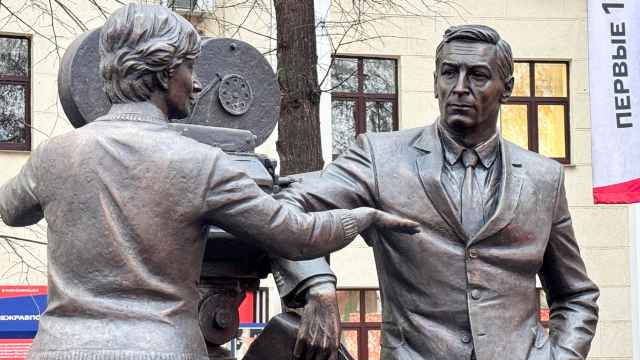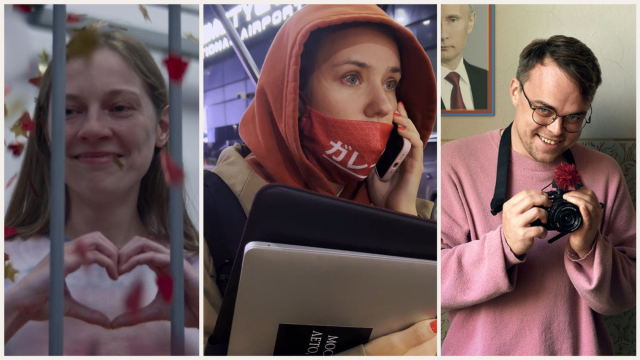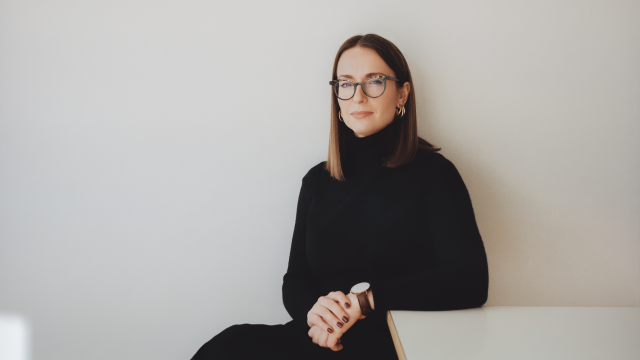Artist Alexei Belyayev-Gintovt is shunned by many in the Russian art scene for the fascist symbolism of his past work.
His latest project is no less polemic. It imagines Moscow as a latter-day Rome: the capital of a Eurasian empire where red Soviet-style stars and onion-shaped domes punctuate the skyline.
"I represent a utopia, a nonexistent place … but also a call for the unreal, for a dream, for something that does not exist," Gintovt said at the opening of his exhibit in Triumph Gallery, near the Red Square.
Unlike most local contemporary artists, who portray post-Soviet Russia as decrepit and struggling to catch up with the West, Gintovt portrays his native land as a glorious nation at the peak of its power and global influence.
He says his art is a call for Moscow not to turn its back on the East and embrace both its European and Asian roots.
"The project combines the origins of the world's greatest traditions, Islam, Buddhism and Orthodoxy, the Kremlin being the sacred center of the gigantic Eurasian continent," he said.
An architect by education, Gintovt's art is a blueprint for Moscow as an ultramodern city, but he balances his futuristic designs by mixing them with artisanal materials. His paintings are printed on felt in a reference to the materials used by Central Asian nomads in yurt tents.
The exhibit, named after the geographical coordinates of the Kremlin, also incorporates slide projection.
Gintovt says his art promotes neo-Eurasianism, a revival of a political movement born in the early 20th century that calls for Moscow to become the capital of an empire stretching across a large swath of the Eurasian continent.
"Russia was conceived as an empire, it was an empire and it will be an empire," Moscow State University professor Alexander Dugin, one of the movement's founders said.
Gintovt has been criticized over his pro-Kremlin stance by fellow artists, who see his work as propaganda at a time when Russian society has been polarized by a wave of opposition demonstrations against Vladimir Putin's 12-year rule.
But in the contemporary art world, critics say Gintovt's controversial reputation helped distinguish him from the crowd, making him a more interesting artist.
"The fact that some works of Belyayev-Gintovt provoke such a reaction is only a plus for him as an artist," contemporary art expert Iosif Bakshtein said.
"The recent events that are taking place in our country … show that the modern tradition of art gestures, which puts an artist on the brink of the acceptable, on the brink of the possible, on the brink of ideologically permissible, continues."
A Message from The Moscow Times:
Dear readers,
We are facing unprecedented challenges. Russia's Prosecutor General's Office has designated The Moscow Times as an "undesirable" organization, criminalizing our work and putting our staff at risk of prosecution. This follows our earlier unjust labeling as a "foreign agent."
These actions are direct attempts to silence independent journalism in Russia. The authorities claim our work "discredits the decisions of the Russian leadership." We see things differently: we strive to provide accurate, unbiased reporting on Russia.
We, the journalists of The Moscow Times, refuse to be silenced. But to continue our work, we need your help.
Your support, no matter how small, makes a world of difference. If you can, please support us monthly starting from just $2. It's quick to set up, and every contribution makes a significant impact.
By supporting The Moscow Times, you're defending open, independent journalism in the face of repression. Thank you for standing with us.
Remind me later.





